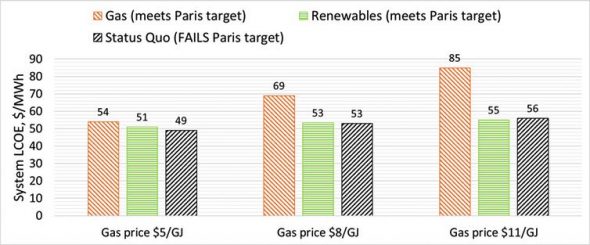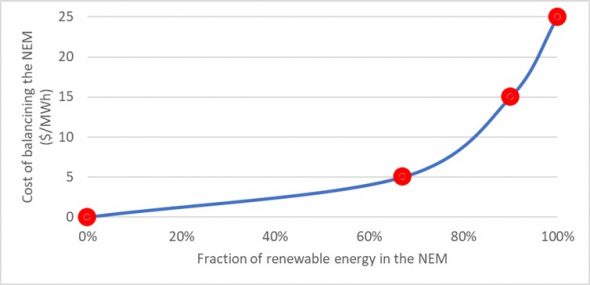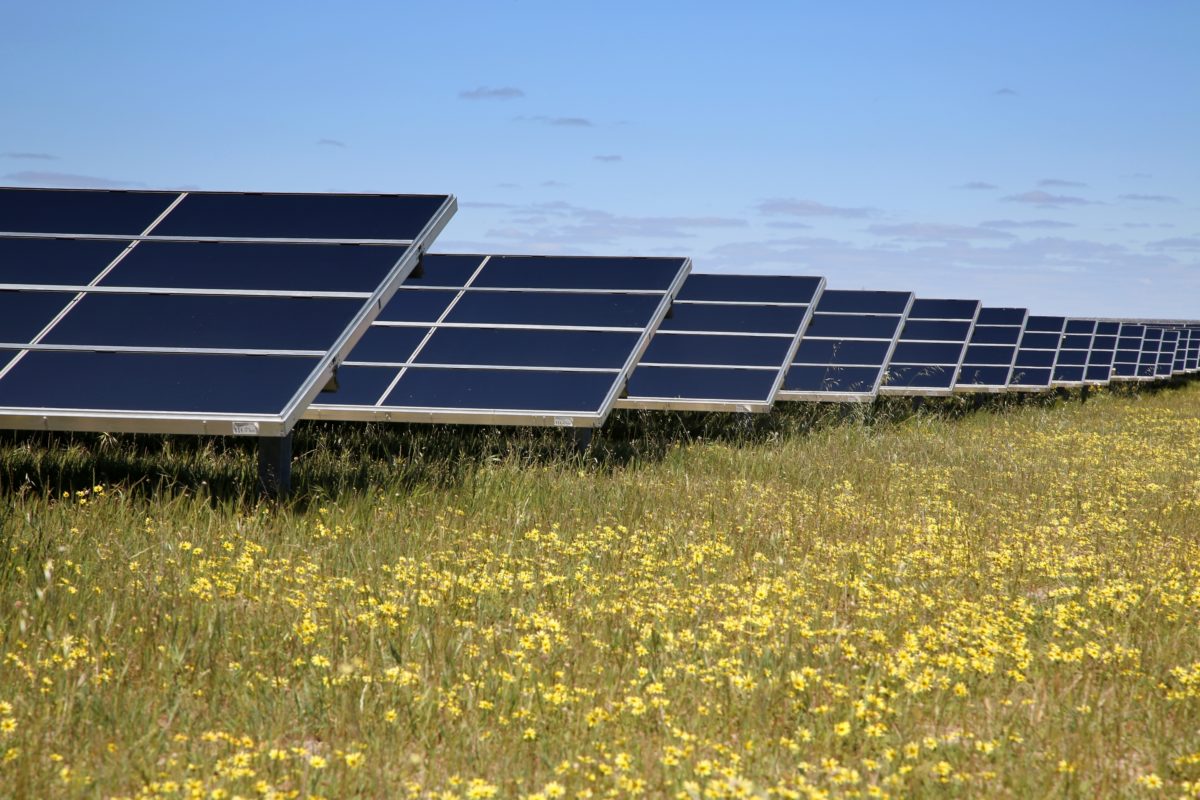With costs of renewables on the downward trajectory, electricity from new-build wind and solar in Australia will be cheaper than replacing old fossil fuel generators with new ones, making it possible for the country to meet its emissions reduction target of 26-28% below 2005 levels by 2030 effectively for free, reads Australian National University’s latest study.
Analyzing options for the National Electricity Market, the study presents three different scenarios based on renewables, gas and status quo, while taking into consideration the Paris carbon target for the electricity sector, retiring coal generators, maintaining high grid stability, and stabilizing electricity prices.

As gas scenario comes with uncompetitive prices and status quo entails replacement of retiring coal generators with supercritical coal, and thereby failure to meet the Paris target by a wide margin, renewables stand out as optimal choice.
Namely, the renewables scenario would entail replacement of enough old coal generators to meet Australia’s Paris climate target, and due to a diverse mix of generators: PV (26GW), wind (24GW), coal (9GW), gas (5GW), pumped hydro storage (5GW) and existing hydro and bioenergy (8GW), would also ensure high reliability of the grid.
With around 3GW of wind and solar capacity added per year, Australia is on course to 50% renewables in the electricity grid by 2030, and set to meet its carbon reduction target.
The study, however, notes that once the renewable energy fraction rises above three-quarters, it will be not only be the cost of renewables, but also the costs of balancing the grid that will need to be considered. But by 2020, there will be no significant change of cost of hourly balancing (now less than AU$7 per MWh), as renewable energy share will be at around one quarter.

This content is protected by copyright and may not be reused. If you want to cooperate with us and would like to reuse some of our content, please contact: editors@pv-magazine.com.









By submitting this form you agree to pv magazine using your data for the purposes of publishing your comment.
Your personal data will only be disclosed or otherwise transmitted to third parties for the purposes of spam filtering or if this is necessary for technical maintenance of the website. Any other transfer to third parties will not take place unless this is justified on the basis of applicable data protection regulations or if pv magazine is legally obliged to do so.
You may revoke this consent at any time with effect for the future, in which case your personal data will be deleted immediately. Otherwise, your data will be deleted if pv magazine has processed your request or the purpose of data storage is fulfilled.
Further information on data privacy can be found in our Data Protection Policy.